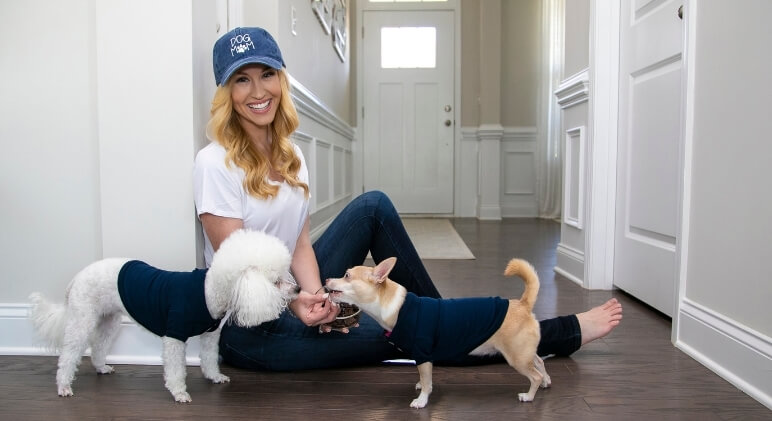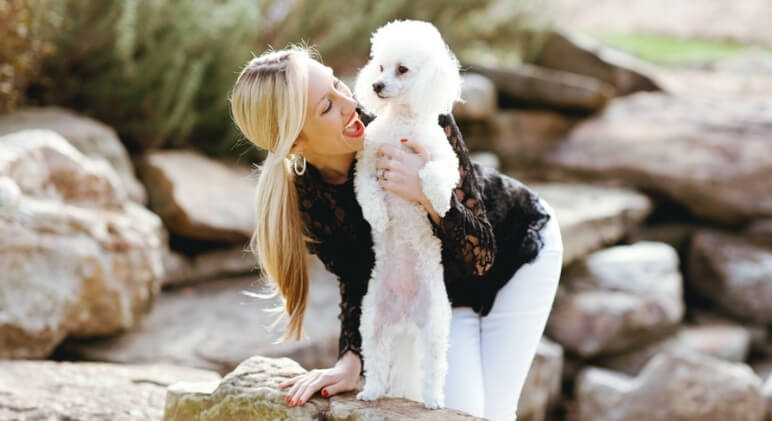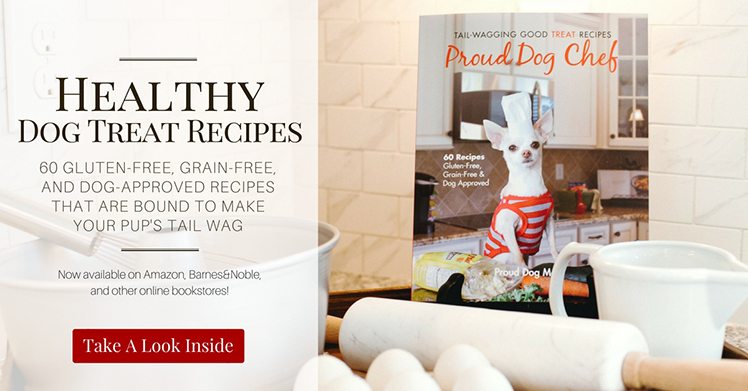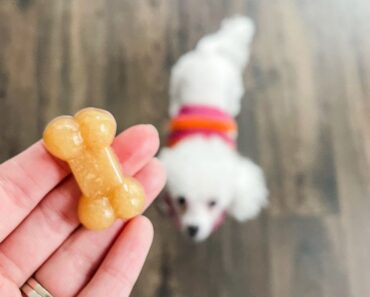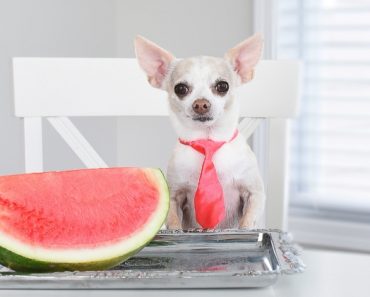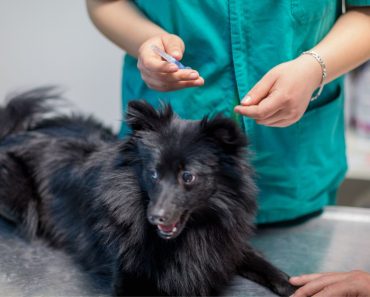Maintaining a healthy weight is essential for your dog’s overall health and wellbeing. But all too often we see dogs who are either a bag of bones (either because they’re experiencing health complications or are being neglected) or plump & pudgy (likely because they’re overfed and/or not getting enough exercise).
Get this: According to the Association for Pet Obesity Prevention, more than 50% of dogs in the United States are considered overweight or obese. And the potential problems associated with those extra pounds are serious.
- Heart Disease
- High Blood Pressure
- Respiratory Disease
- Diabetes
- Certain Cancers
- Arthritis
- Heat Intolerance
- Reproductive Issues
- Decreased Energy
- Depression
- Decreased Quality Of Life
- Decreased Lifespan
Here’s the thing: Your dog’s weight should be like baby bear’s porridge. Not too chunky. Not too boney. But somewhere right in the middle that’s just right!
Is Your Dog a Healthy Weight?
Along with stepping onto the scale at your vet’s office to see if your pup weighs within a healthy range for their breed and age, you can also get an idea by simply looking at their overall body shape and feeling for their bones.
Some signs to watch for:
Signs Your Dog Is Too Thin/Underweight
- Ribcage highly visible
- Spine clearly sticks out
- Hip bones clearly stick out
- Very little fat cover or padding between the skin and bones
- Dramatic waist cinch, when viewed from above
- Dramatic abdominal tuck, when viewed from the side
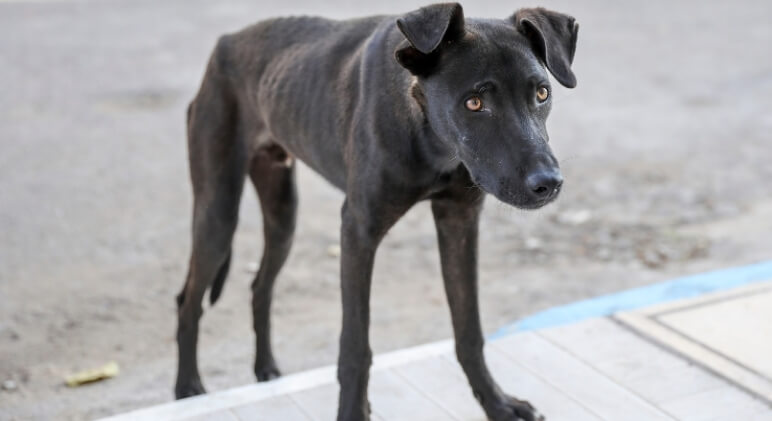
Signs Your Dog Is an Ideal Weight
- Ribs can be felt, but not easily seen
- Waist slightly cinches, when viewed from above
- Abs tuck up, when viewed from the side

Signs Your Dog Is Overweight/Obese
- Ribs are not visible. When feeling for the ribs, you’ll notice thicker padding above them.
- Waist is barely visible or even bulges out, when viewed from above
- Belly may look round and fall to either the same level as the chest or even further to the ground than the chest, when viewed from the side
- Fat deposits and skin folds develop near the base of the tail, back, and neck
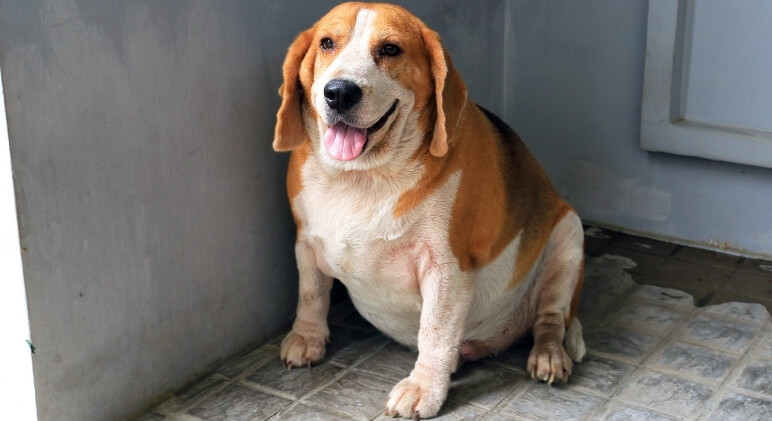
Take a Closer Look
Check out this chart from GuideDogs.org for a better visual:
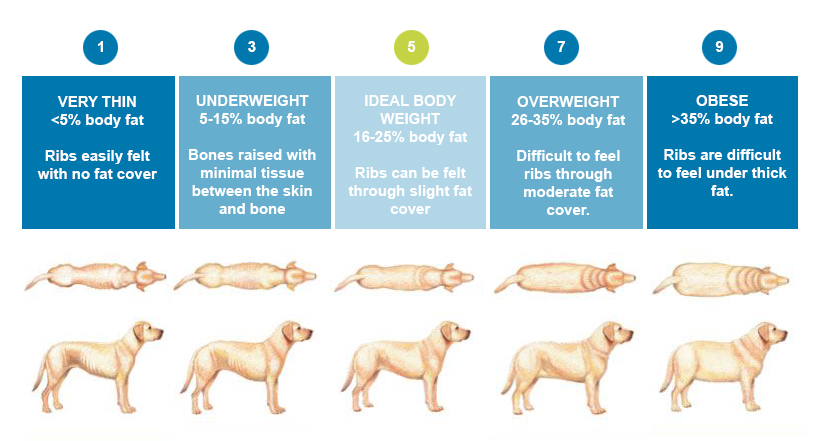
How To Maintain a Healthy Weight
Get Active
If your dog is overweight or obese, increasing exercise is key. It can be as easy as increasing playtime or going for a walk. Depending on your pup’s activity level (and yours too!), you can also take your dog running or go on a challenging hike.
If your dog is not used to exercising, start slow and increase the workout as he gets used to it. Never exhaust him.
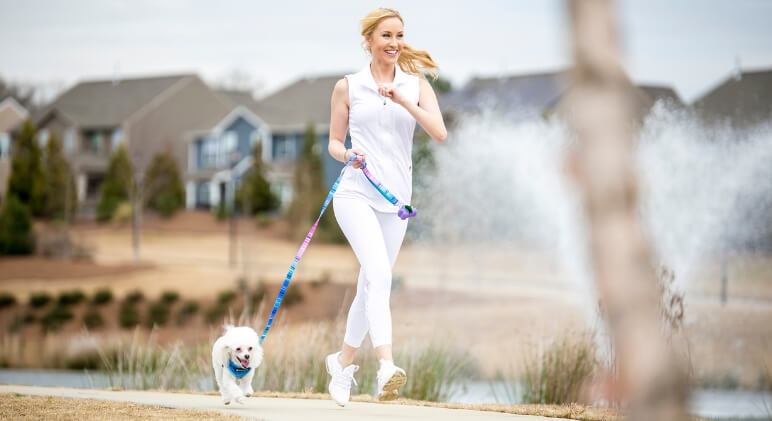
Meal Time
If you free-feed kibble, stop letting your dog graze throughout the day and start portioning out the proper size meals for your dog’s breed, age, lifestyle, etc.
Are you a home-cook? If so, get a food scale and measure out the correct portions. Or, if you use a fresh dog food service then that work is done for you!
I’m a huge advocate for switching from processed kibble to fresh food, if it’s within your budget. Quality meats and veggies are great for a dog’s overall health and wellbeing. I personally feed my dogs The Farmer’s Dog, which is a real food subscription service that cooks fresh, human-grade food for dogs.
Here’s how it works: On their website, you answer a few simple questions about your dog (like name, age, breed, weight, etc.). You’ll be offered 4 formulas: beef, turkey, chicken, and pork. You choose which ones you want (it can be just one or all four). Then, The Farmer’s Dog whips up the meals and perfectly portions them out to your dog’s unique calorie needs. Once your dog’s food is ready, it immediately gets packaged, labeled, and shipped over dry ice. It arrives at your door within a day or two of being packaged!
I reached out to the company a while ago and snagged you guys 50% off your first order! If you want to check it out, you can redeem your 50% off HERE!
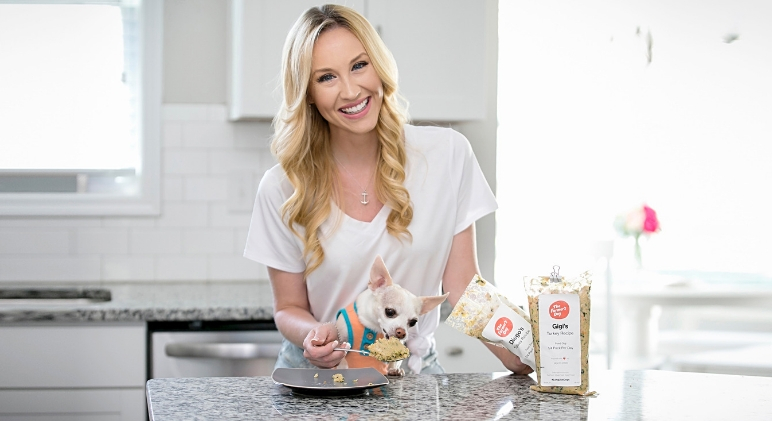
Watch The Treats
How many treats do you give your dog each day? Really think about that for a second and be honest with your answer. Do you reward your pup every time he goes outside to potty? Do you then pass out treat-after-treat during training sessions? And then what about interactive puzzles and toys – do you stuff them with a handful of tasty snacks to let your pup play?
If you have a pudgy pup, monitor how many treats you’re feeding. As a general rule of thumb, treats should make up no more than 10% of your dog’s total caloric intake.
Along with quantity, keep quality in mind. Rather than the store-bought stuff, I prefer to make my own dog treats (I share healthy recipes right here on my blog or in my cookbook, Proud Dog Chef: Tail-Wagging Good Treat Recipes). You can also simply use fresh, Fido-friendly fruits and veggies as tasty rewards. Some options:
- Baby carrots are great for teeth and eye health. They are loaded with vitamin A and beta-carotene.
- Green beans are low calorie and filling. No salt. You can also dehydrate them for a crunch.
- Apple slices are a satisfying treat. They’re loaded with vitamins and antioxidants and provide a nice crunch. Not too much apple because of the sugar, though. Plus, NEVER feed them the pits!
- Blueberries, strawberries, watermelon. These all freeze well too!
- Dehydrated sweet potatoes.
- Frozen banana slices.
